Tsunami Memorial : Just run- run uphill
Revisiting the Tsunami area 15 months after my last visit. Has progress been made?
The last time I came up here to the small village of Hakozaki, a small fishing village which belongs to Kamaihi in Iwate Prefecture was in April 2012 when my family volunteered for a few days to clean up the remains of debris the Tsunami had left after the terrible desaster of March 11th 2011. These were the last months, we thought, cleaning was taking place and reconstructing would start soon. Now, another 17 months later I was more than curious to see what had happened there. I knew that by various reasons progress was slow but I was hoping to see visible signs of recovery.
This was the place we had been working at in spring 2012.
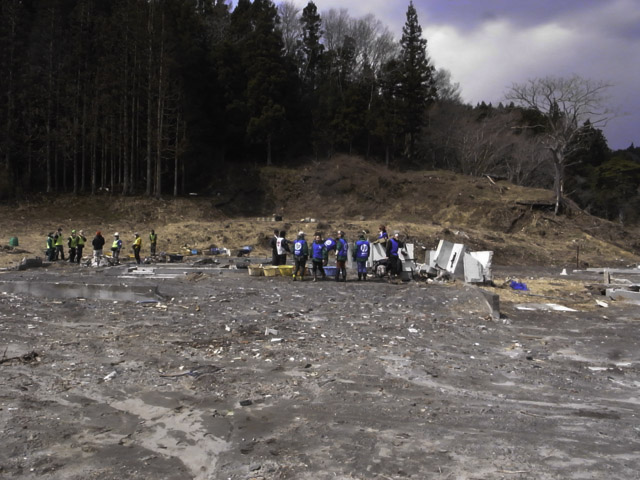
In 2012 I took a picture out of the only solid building, a elementary school, where all the working equipment was sheltered. The school has been scrapped but the view uphill to the houses which survived the tsunami remains the same.
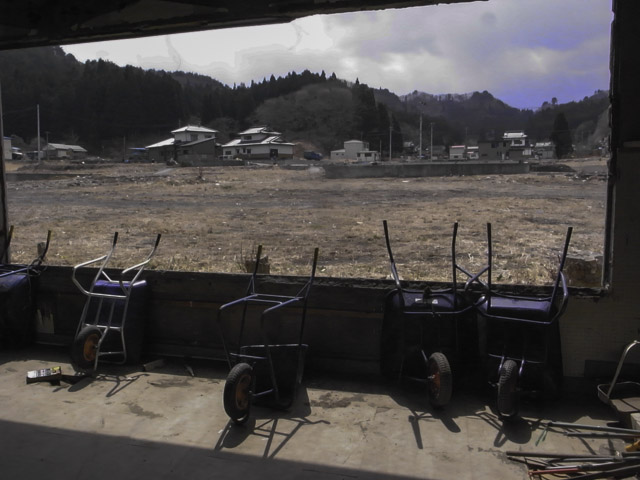
And one more example of a tourist hotel which was located at beach near by and had collapsed under the force of the tsunami.
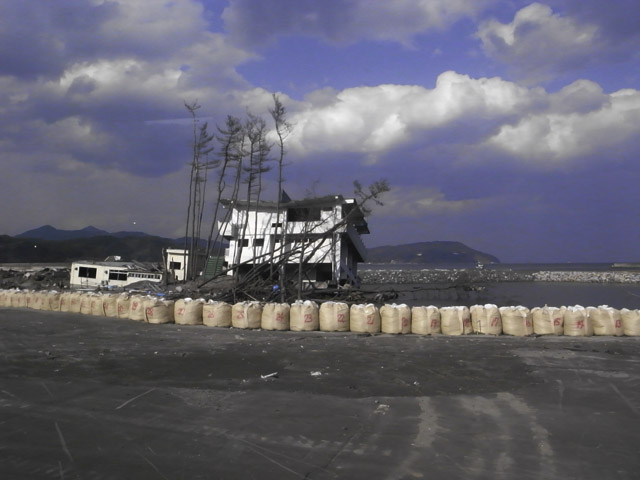
The building has been completely demolished. Only the damaged stairs over the wall, which was supposed to protect, remains as a grim reminder of the tragedy.The rubble of the hotel is still piled up.
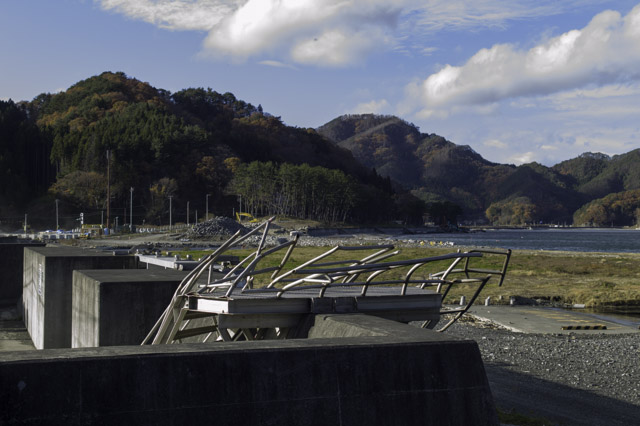
Progress over the last 17 months is hardly visible. Certainly infrastructure has been restored. Hakozaki had 240 houses before the tsunami and 180 were destroyed. Some of the families have been sheltered in the remaining parts of the village further uphill. So providing basic services was a necessity. There is a postoffice, a mobile ATM machine, a container-supermarket and the garage for the firebrigade.
Two construction sites were visible. On the site close to the sea the soil was searched through once more. The construction sign gave no indication to the nature of the future construction.
But I learned from locals in the neighbourhood that buildings for fishery etc. would be constructed first. This helps bringing business back, including jobs. Decisions on private housing are delayed by various reasons. In some places the community looks for living areas on higher grounds further off the coast, in others elevating the ground by several meters seems to be an option. In a bigger part of Kamaishi we passed through, one side of the river valley is reserved only for official buildings made out of concrete. It was positive to see that local fishers are starting again, on a small scale however.
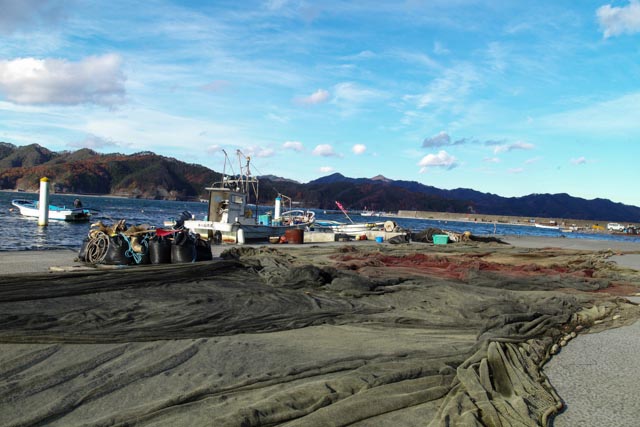
On the way back we stopped at a small guesthouse, which overlooks the bay and was not destroyed on March 11. For me it was a landmark which I remembered well. The owner explain to us vividly the events of this day, when the ryokan was flooded up to the second floor and she was taken out by the waves to the sea. Today she tries with a lot of energy and creativity to again attract guests.She has constructed a new escape route uphill in case of an even stronger tsunami.
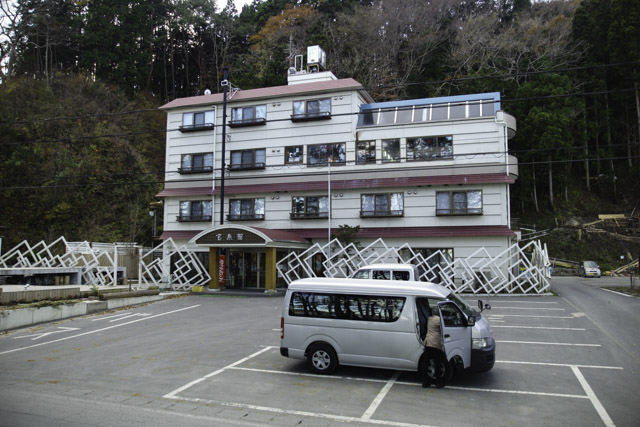
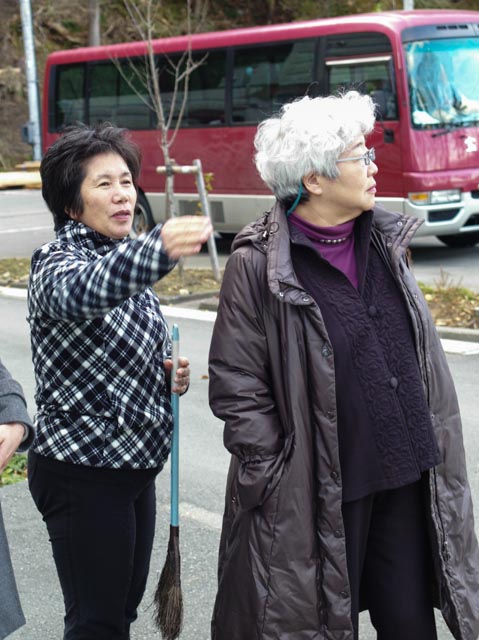
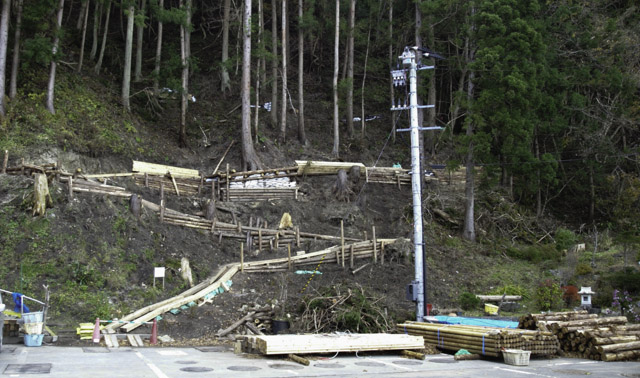
Why should guests come as the beach has be narrowed down to a small strip. Maybe because of the memorial which has been erected across the street overlooking beach and the bay. It´s horizontal line marks the peak of the tsunami. The memorial has a inscription which advises to run .. to run uphill and not to care for the others. It calls to future generations to pass on this message.
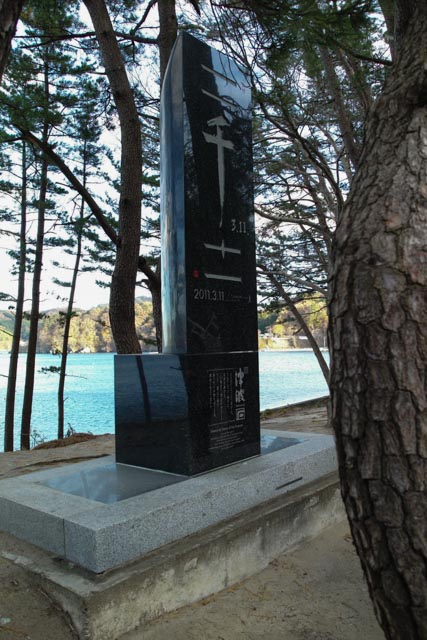
After driving around for two more hours to other small villages I have to admit that I still focus more on the visible signs of disaster than on the also increasing evidence of reconstructing. Maybe we are all expecting and hoping for too much too soon.
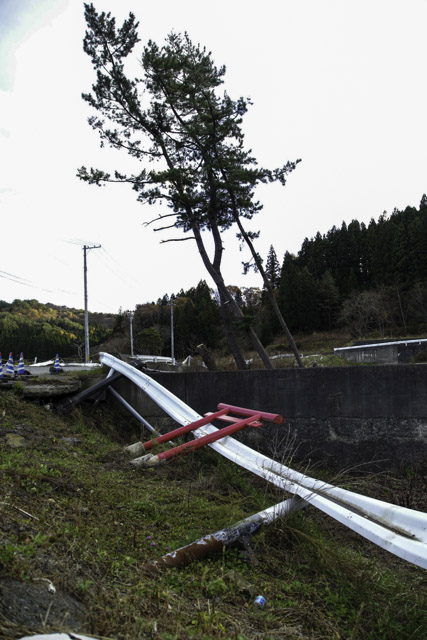
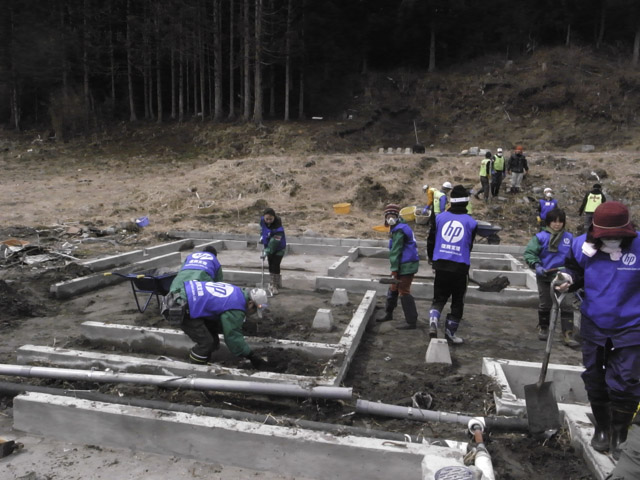
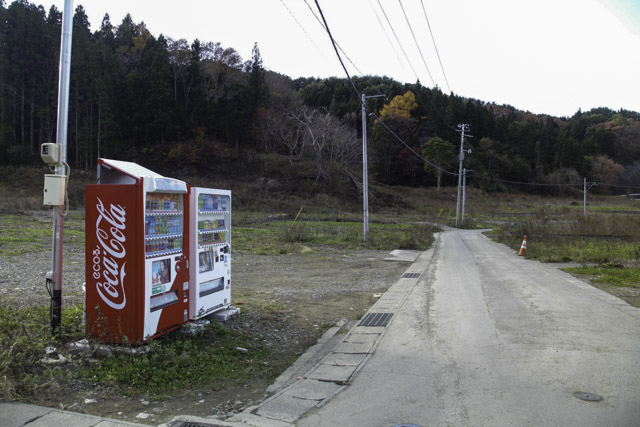
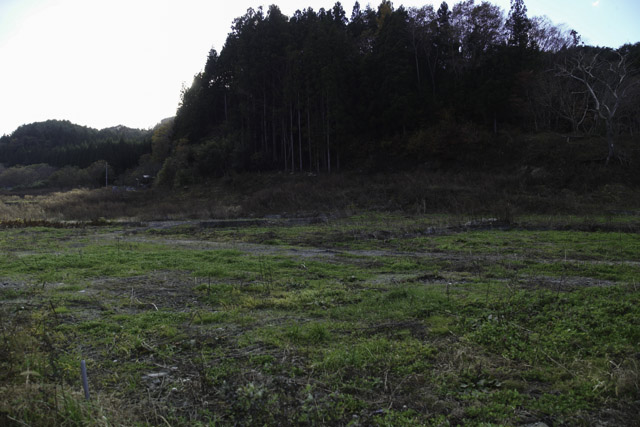
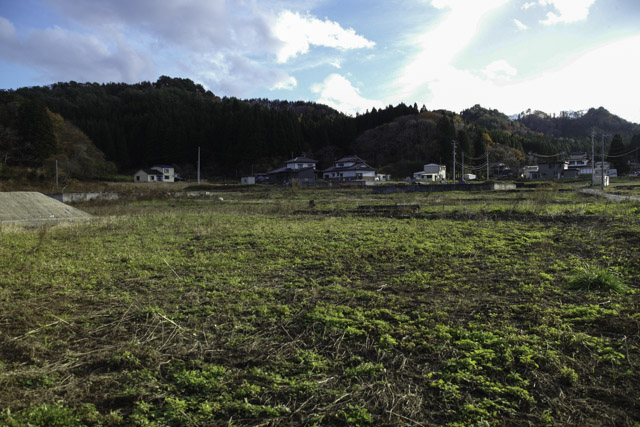
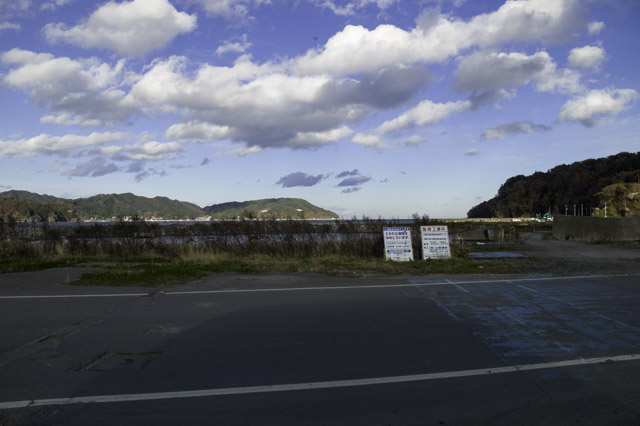
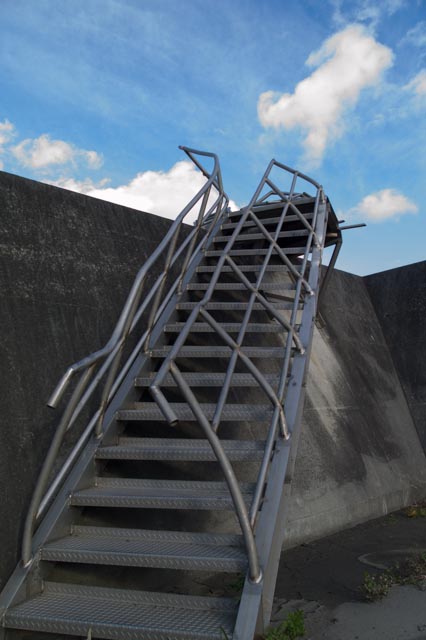
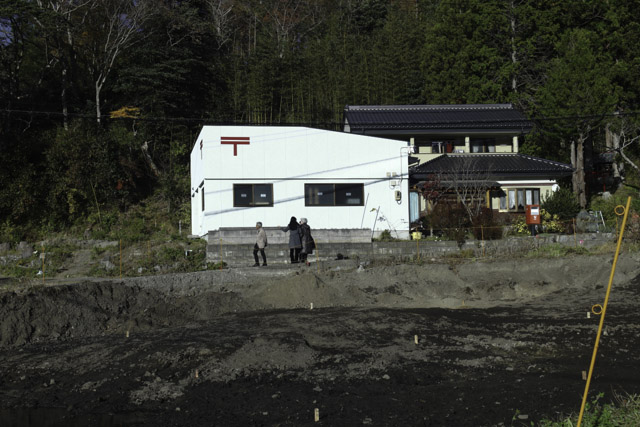
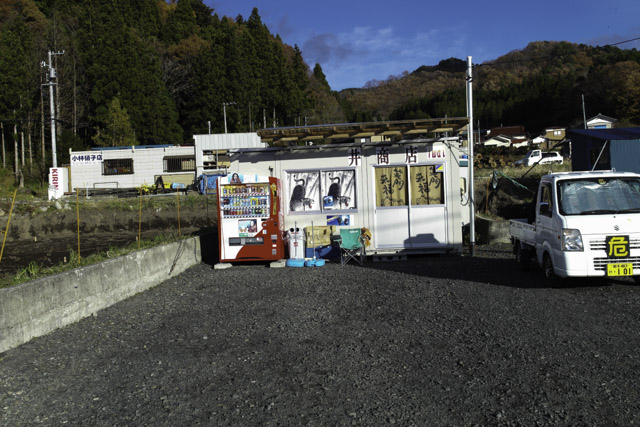
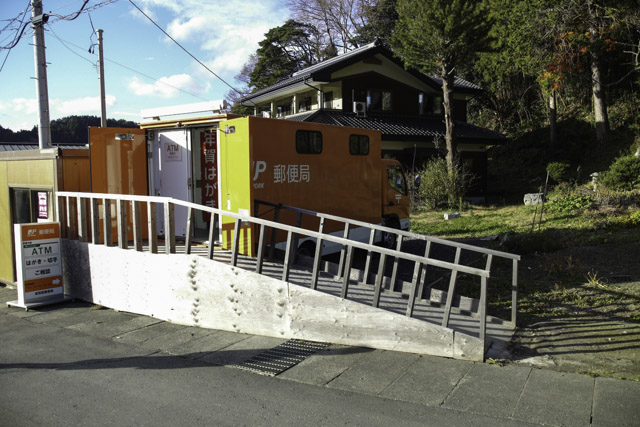
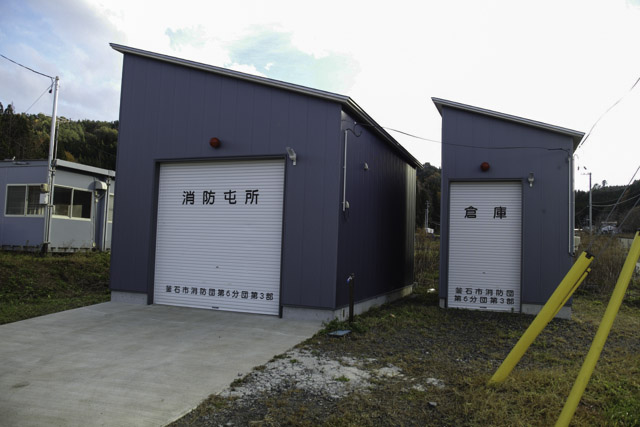
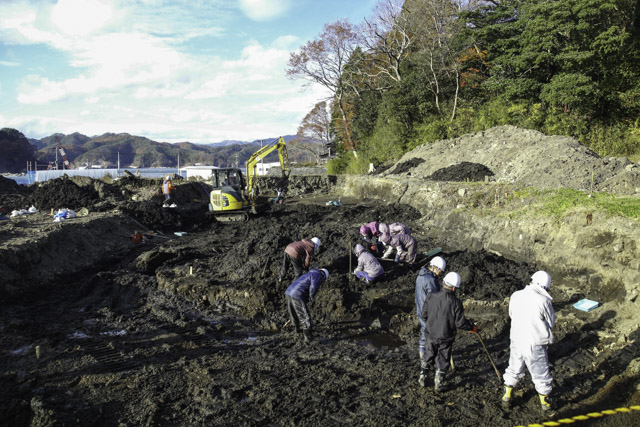
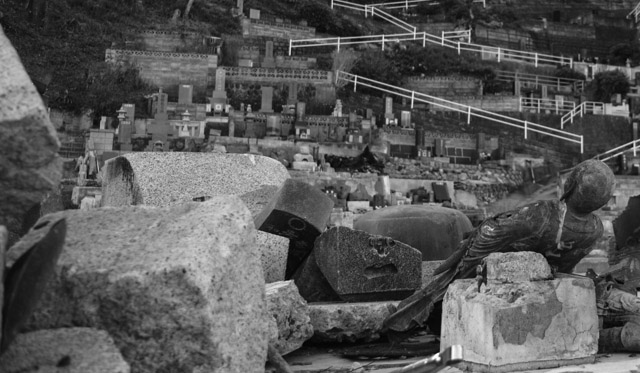
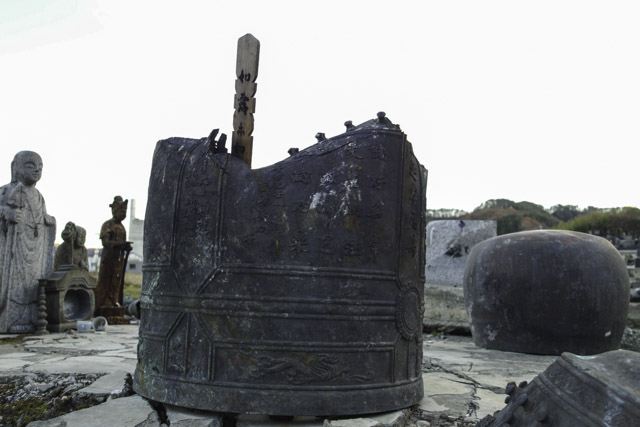
Leave a Reply